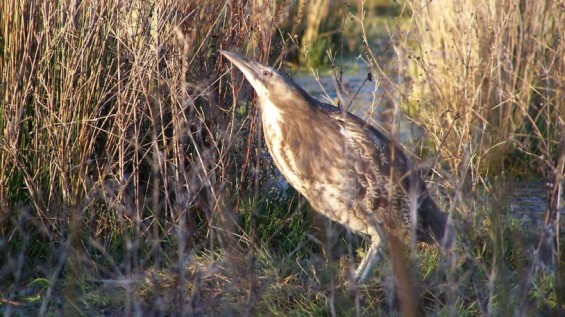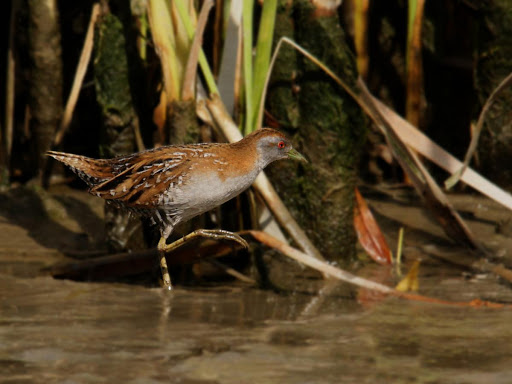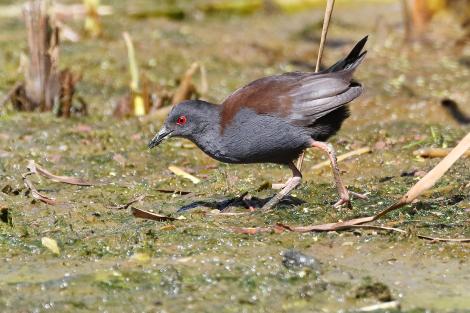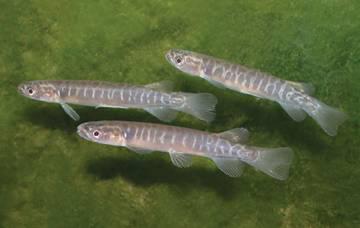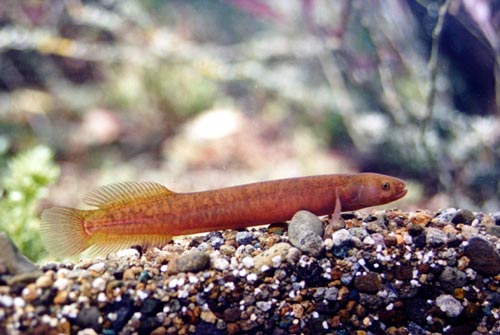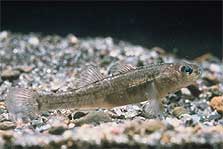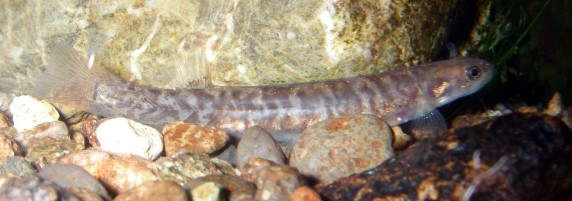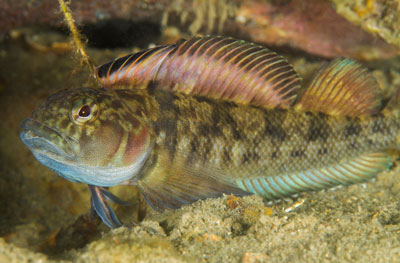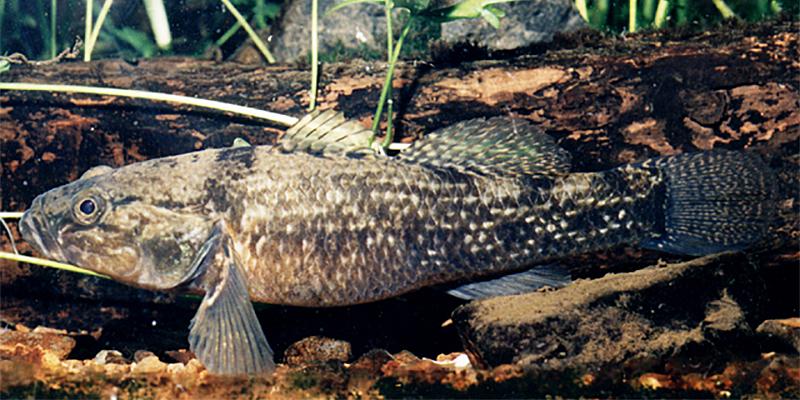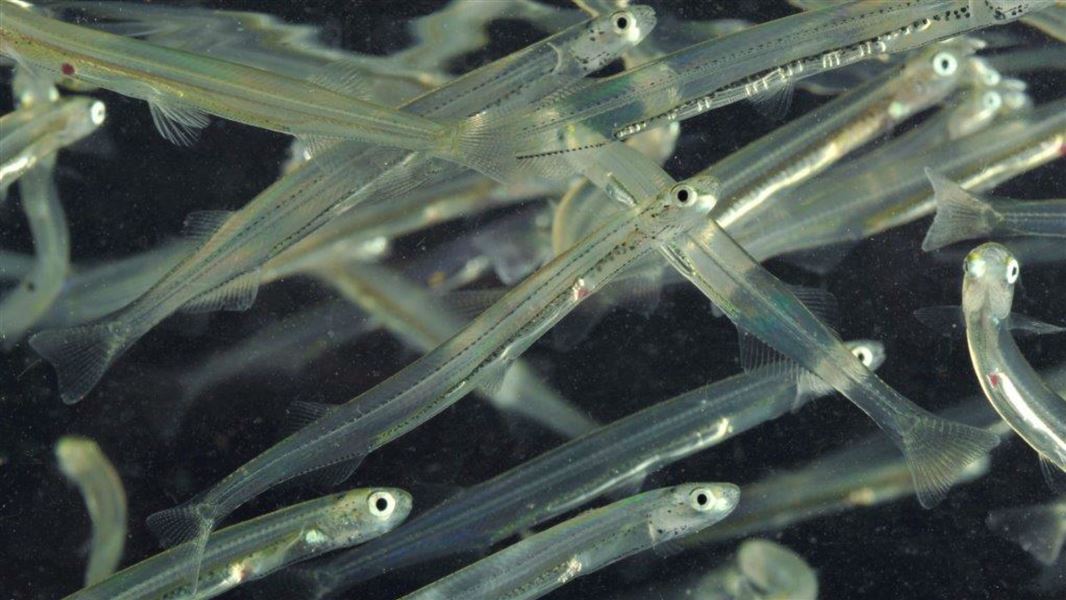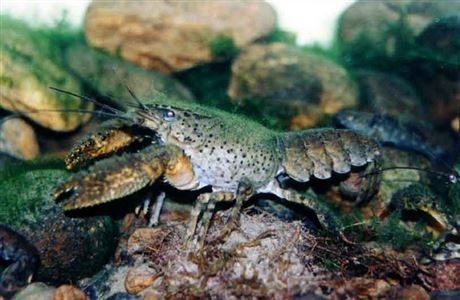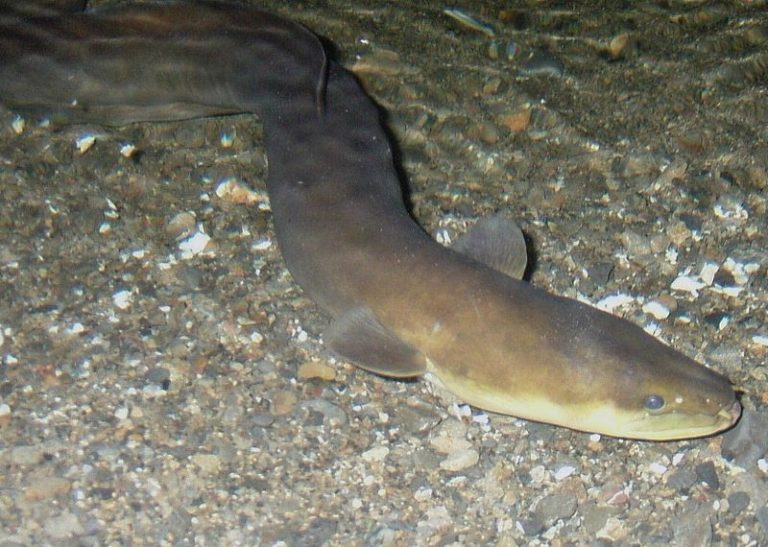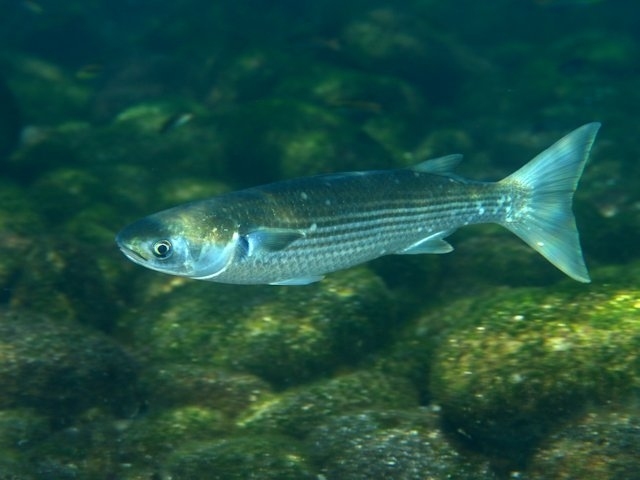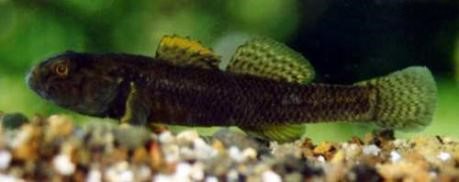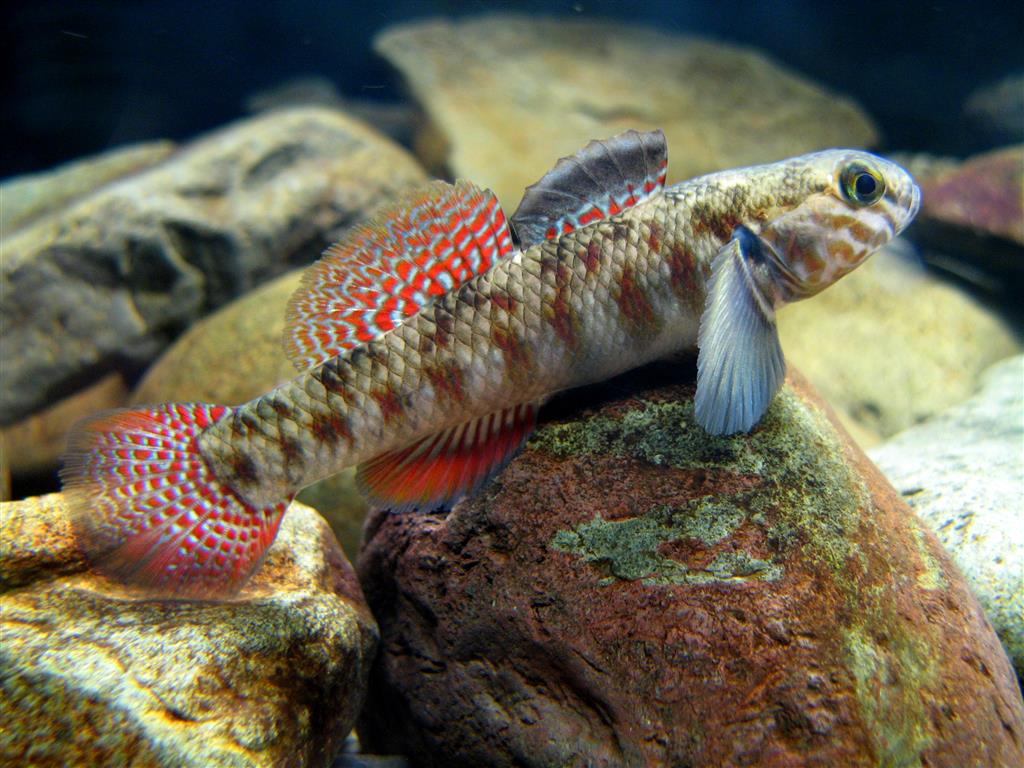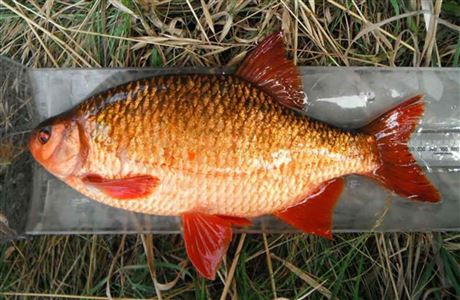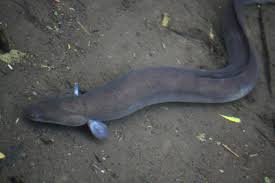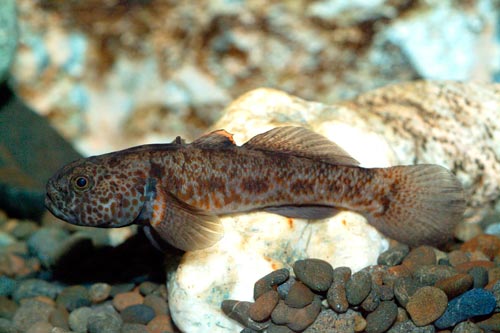Matuku
Matuku (
Botaurus poiciloptilus), the Australasian bittern, are mainly found in New Zealand wetlands of Northland, Waikato, East Coast of the North Island, and the West Coast of the South Island. Matuku are important to Māori and appear in language as part of legends, stories, early pictures and metaphor. They are a potential indicator of wetland health because they are dependent on the presence of high quality and ecologically diverse habitats and rich food supplies.
Conservation status: Threatened - nationally critical More information and photo attribution ["wl068", "wl174", "wl174"]
Koitareke
Koitareke (
Porzana pusilla affinis), the marsh crake, is one of the most secretive New Zealand birds, largely because it inhabits dense wetland vegetation, rarely ventures into the open and usually only calls at dusk and through the night. They are a potential indicator of wetland health because they are dependent on the presence of high quality and ecologically diverse habitats and rich food supplies.
Conservation status: At risk - relict More information and photo attribution ["wl052"]
Pūweto
Pūweto (
Porzana tabuensis plumbea), the spotless crake, is a cryptic bird of freshwater wetlands throughout North Island and much of South Island. This small dark coloured rail (about half the size of a common blackbird) is very secretive and relatively infrequently seen. They are a potential indicator of wetland health because they are dependent on the presence of high quality and ecologically diverse habitats and rich food supplies.
Conservation status: At risk - relict More information and photo attribution ["wl013", "wl013", "wl015", "wl015", "wl019", "wl019", "wl044", "wl052", "wl066", "wl067", "wl068", "wl071", "wl089", "wl091", "wl099", "wl110", "wl118", "wl174", "wl174"]
Banded kōkopu
Kōkopu (
Galaxias fasciatus) are found mostly in the small pools within boulder streams that flow through native forests. They are widespread, moving well inland (between 550 and 180 kilometres from the coast). They are very strong climbers and can ascend obstacles such as waterfalls. These three adults are probably around 20 centimetres long. As juveniles, when they are caught as whitebait, banded kōkopu are about a quarter of this length and have a golden tinge.
Conservation status: Not threatened More information and photo attribution ["wl013", "wl013", "wl086"]
Brown mudfish
Brown mudfish (
Neochanna apoda) usually grow to 10-12 cm in length, but can grow as large as 17.5 cm. They have thick skin with no scales and vary in colour from mottled light brown to almost black.
Conservation status: At risk - declining More information and photo attribution ["wl011", "wl013", "wl013", "wl015", "wl015", "wl052", "wl068", "wl164", "wl174", "wl174"]
Brown trout
The brown trout (
Salmo trutta) is the most widespread and common introduced fish in New Zealand waters, occurring virtually everywhere in New Zealand south of Auckland. Brown trout are primarily a freshwater species, but can spend time in the sea.
Conservation status: Not threatened More information and photo attribution ["wl015", "wl015", "wl083"]
Common bully
The common bully (
Gobiomorphus cotidianus) is one of the most widespread and well-known native fish. The larvae hatch from eggs laid in fresh water, go to sea for three to four months, and then return.
Conservation status: Not threatened More information and photo attribution ["wl011", "wl015", "wl015", "wl052", "wl068", "wl093", "wl164", "wl174", "wl174"]
Dwarf galaxias
Dwarf galaxias (
Galaxias divergens) are a slender fish with a small head and blunt snout. Colour ranges from amber to olive green with dark brown blotches on the sides and back. The underside is silvery. River species require good riparian cover, streamside shade and logs and/or boulders instream.
Conservation status: At risk - declining More information – photo by Alton Perrie
["wl083"]
Estuarine triplefin
The estuarine triplefin (
Forsterygion nigripenne) can be found in tidal marshes and estuaries from the intertidal zone to about twelve metres deep. Often associated with red algae. Sometimes it can be found in the lower reaches of rivers and streams. The sides of the fish are mottled and lack the horizontal stripes of other Triplefins.
Conservation status: Not threatened More information and photo attribution ["wl086"]
Giant bully
The giant bully (
Gobiomorphus cotidianus) is a dark-coloured fish that prefers lowland waterways especially estuaries and is almost always found beneath cover, only to emerge at night to feed. It can grow over 15 cm long. It is presumed that giant bullies have a marine phase in their life cycle, but this is not known for sure.
Conservation status: Not threatened More information and photo attribution ["wl086"]
Goldfish
Goldfish (
Carassius auratus) generally live in still waters (ponds and lakes), but also inhabit slow flowing rivers and streams. Their distribution is widespread in the North Island and more restricted in the South, but recent surveys have found goldfish in Nelson, central Otago, Southland and the West Coast.
Conservation status: Not threatened More information and photo attribution ["wl019", "wl019"]
Īnanga
Īnanga (
Galaxias maculatus) are the most common native fish species caught as whitebait. Migratory galaxiids. Īnanga have an unusual lifecycle. They begin life as eggs laid in vegetation beside streams in late summer and autumn. When the eggs hatch, they are carried downstream as larvae and spend the next six months at sea. In the spring they migrate upstream as whitebait and grow into adult fish.
Conservation status: At risk - declining More information and photo attribution ["wl052", "wl059", "wl068", "wl086", "wl093", "wl118", "wl174", "wl174"]
Kōura
Kōura (
Paranephrops zealandicus, Paranephrops sp., Paranephrops planifrons), freshwater crayfish, are dark green and mottled like the stones it lives amongst on stream bottoms. Kōura have a special part to play in our freshwater lakes and streams. They are native animals and recycle some of the leftover materials by their scavenging, therefore helping to clean up our streams and lakes in their own small way. Populations are decreasing in some areas as they are subject to habitat modification, land intensification, and increased predation - particularly for human consumption.
Conservation status: Paranephrops zealandicus: at risk - declining. Paranephrops sp., Paranephrops planifrons: not threatened More information and photo attribution ["wl019", "wl019"]
Longfin eel
Longfin eels (
Anguilla dieffenbachii) can only be found in New Zealand and, while still relatively common, longfin eels face significant threats from fishing, habitat loss and pollution. Changes caused by hydro development, drainage and irrigation schemes and river diversions affect eels by reducing their habitat and the water available for aquatic life. Culverts and dams can also impact on eels by preventing their migration. Additionally, sewage and effluent from meat works and pulp and paper plants discharged into rivers can remove large quantities of oxygen from the water. The result of this oxygen depletion is that the fish will either die or move away.
Conservation status: At risk - declining More information and photo attribution ["wl011", "wl013", "wl013", "wl015", "wl015", "wl019", "wl019", "wl052", "wl059", "wl083", "wl086", "wl093", "wl164"]
Mullet
Aua (
Aldrichetta forsteri), the yellow-eyed mullet, is common in estuaries, harbours and sheltered bays, and is also found in the lower reaches of rivers. In summer, large schools are seen in estuaries. They are often incorrectly called sprats or herrings. The grey mullet (Mugil cephalus) is widespread throughout the world. In New Zealand it is most common in northern harbours and is often caught with set nets.
Conservation status: Grey mullet: not threatened. Yellow-eyed mullet: at risk - declining. More information and photo attribution ["wl086"]
Non-diadromous bully
Of the six bully (
Eleotridae) species in the Greater Wellington region, the Crans (
Gobiomorphus basalis, shown in the photo) and upland (
Gobiomorphus breviceps) bullies are non-diadromous, meaning that they do not make migrations between the sea and fresh water. Common bullies can also be non-diadromous, and together the three species can sometimes be hard to distinguish between. As non-diadromous bullies have no marine phase, their ability to colonize new river systems is limited, and once they are gone from an area it is unlikely they will re-colonize on their own.
Conservation status: Not threatened More information and photo attribution ["wl013", "wl013"]
Perch
Perch (
Perca fluviatilis) are an introduced species that prefer slow-flowing and still water habitats. They are strictly carnivorous and adults feed mainly on other fish. Perch have been shown to reduce the abundance of common bullies in lakes. They also reduce īnanga, smelt and kōura in lakes where they have been introduced. At high densities, small fish predominate and can cause toxic cyanobacterial blooms.
Conservation status: Not threatened More information and photo attribution ["wl015", "wl015", "wl019", "wl019"]
Redfin bully
The redfin bully (
Gobiomorphus huttoni) is distinguished from other bullies by having diagonal cheek stripes and grow up to 12 cm long. Male redfin bullies are our most colourful native fish, with bright orange-red fins. Like other bully species, the male guards the nest before the larvae get washed out to sea and migrate back to freshwater as small juveniles.
Conservation status: At risk - declining More information and photo attribution ["wl083", "wl086"]
Rudd
Rudd (
Scardinius erythrophthalmus) were first introduced into New Zealand illegally in 1967 when juvenile rudd were ordered into the country through a private consignment. These fish were reared to maturity and bred to produce young. Due to their fast breeding, rudd can quickly outnumber native fish in a stream and take over a waterway; potentially affecting populations of native fish and plants, and degrading water quality
Conservation status: Not threatened More information and photo attribution ["wl174", "wl174"]
Shortfin eel
The shortfin eel (
Anguilla australis) is found in New Zealand, Australia and some Pacific Islands. They live mostly in lowland areas and are relatively pollution tolerant as opposed to the native longfin eel.
Conservation status: Not threatened More information and photo attribution ["wl013", "wl013", "wl015", "wl015", "wl019", "wl019", "wl052", "wl059", "wl068", "wl071", "wl083", "wl086", "wl093", "wl114", "wl118", "wl164", "wl174", "wl174"]
Upland bully
The upland bully (
Gobiomorphus aff. breviceps) is stockily built with a large head They grow to about 8 cm long and can be found in a variety of habitats. The upland bully does not undertake a migration.
Conservation status: Not threatened More information and photo attribution ["wl015", "wl015"]
